Despite the ubiquity of smartphones, mobile devices have struggled as shopping platforms. Small screens and navigation issues often make it difficult for online shoppers to browse, select products, and check out as seamlessly as they would on a desktop e-commerce site.
Consumers expect a frictionless e-commerce experience on their desktop and Mobile platforms – and some e-retailers are getting it right. Here are seven mobile-friendly e-commerce websites to show you how to create a great mobile user experience for your online business.
7 great mobile-friendly e-commerce websites
Here are seven examples of e-commerce websites that are optimized for mobile experience. We tested each on several smartphones and tablets to ensure they offered seamless mobile performance. If you run an e-commerce store or are looking to start selling online, these are great models to emulate.
1. Etsy
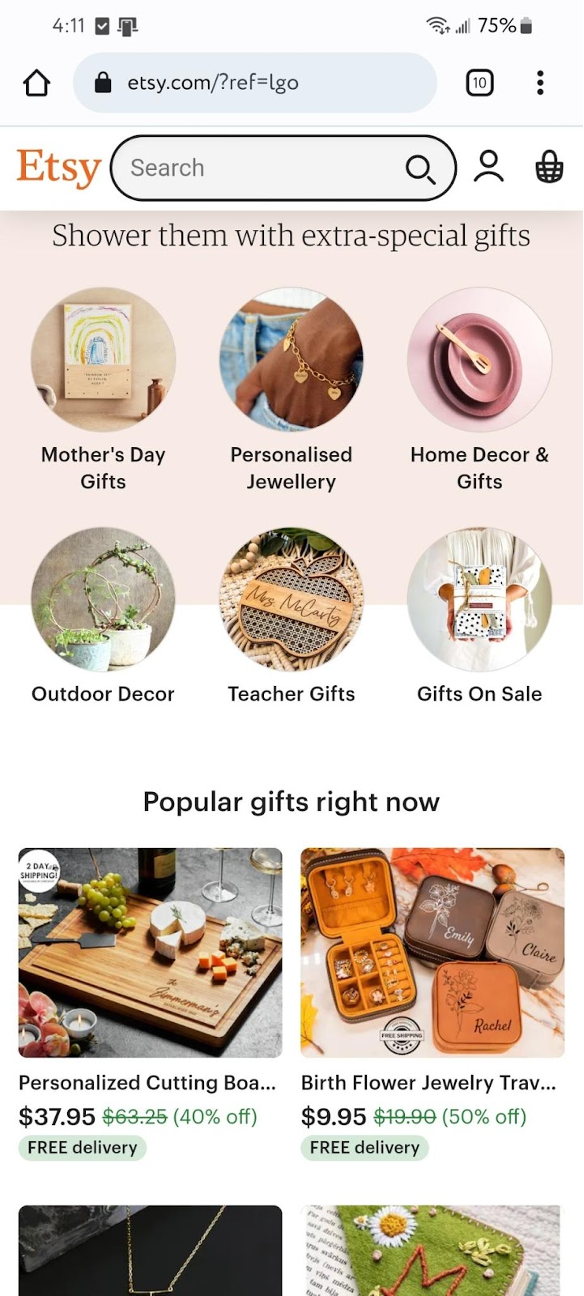
Etsy's mobile homepage. Image source: Etsy
Etsy is a popular e-commerce site made up of third-party sellers who use the platform to sell their unique creations directly to the public. Etsy is probably best known for its mobile app, and both its website and mobile app are very user-friendly and work well.
The home page features thumbnails that give you direct access to the site's most popular categories. Listing all product categories is difficult on mobile phones due to screen size limitations. However, Etsy successfully circumvents this limitation with its smart navigation menu. Select the search bar at the top and start typing to immediately see product categories. For example, typing “H” will give you a complete list from “home decor” to “hoodies.”
remove: Keep it simple. Shoppers prefer simple designs that help them find what they want quickly.
2.Express
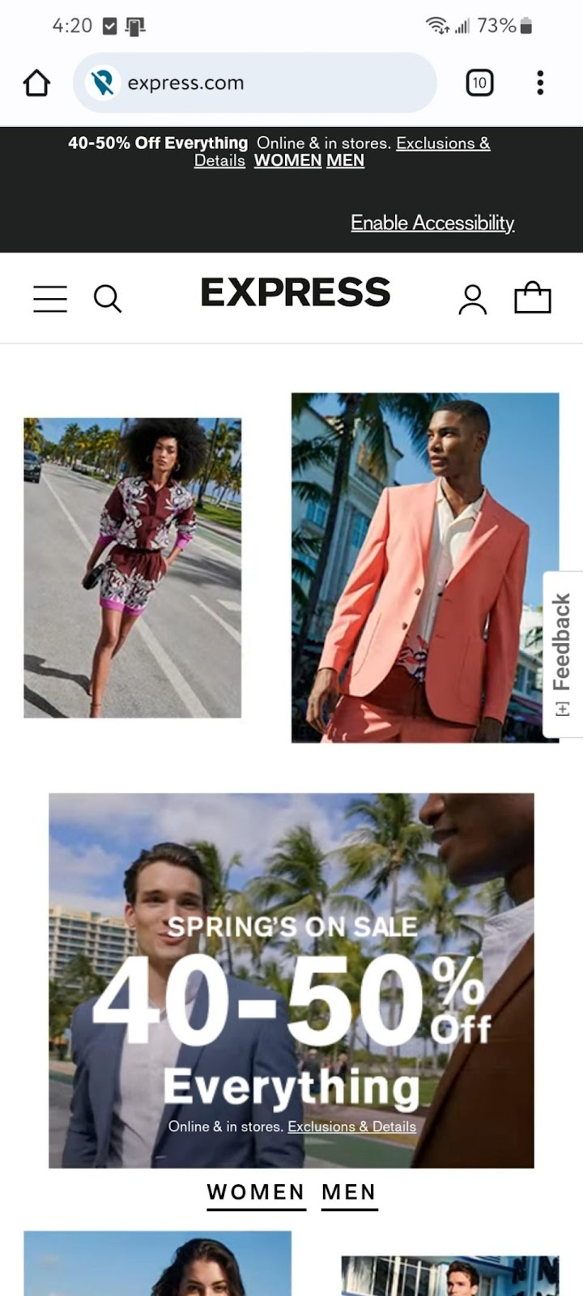
Express.com mobile home page. Image source: Express.com
The clothing store caters to young male and female customers, whose time Express clearly respects, by creating a very intuitive mobile site. A prominent hamburger menu gives you access to various departments in one or two clicks. Additionally, a well-placed search bar allows users to instantly get links to trending search terms.
The images on the site are very clear, and the “Style It With” feature is useful, allowing visitors to point out other clothing and accessories that complement the particular item they're looking at. Another cool feature is that users can swipe left on the product images to see a different view of each piece, even if the thumbnails are off-screen.
remove: Shoppers want instant gratification. All operations on the Express website can be performed with one or two clicks. Recommendation engines are a natural way to drive upsells and cross-sells. Enabling shoppers to see multiple product views without extra clicks greatly improves the user experience.
3. Nike
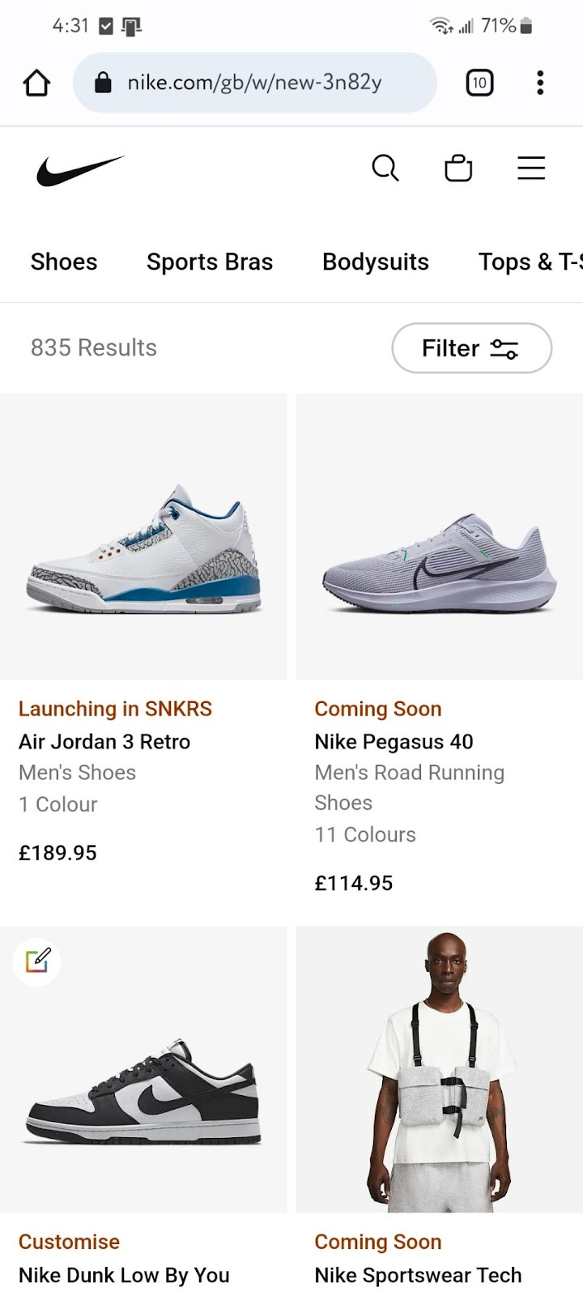
Nike's new feature page on mobile. Image source: Nike.com
This famous shoe manufacturer and retailer uses stunning product photography and concise copy to captivate users. The site's minimalist design focuses on products with detailed, clear, and fast-loading images.
There are three main icons at the top of the page: a search bar, a shopping cart, and a drop-down menu to access categories. Once in the menu, you can access the desired department with just two clicks.
remove: Busy shoppers appreciate when the products they're interested in are accompanied by high-quality images and clear, descriptive copy. Without these elements, you risk losing your visitors' attention. Your girlfriend's website is competing with text messages, Facebook updates, and her Snapchat, Pinterest, TikTok, Periscope, and LinkedIn seductions. You don't have much time to capture and hold a shopper's attention.
Website design mistakes that hurt conversion rates include missing or unclear CTA buttons, bad stock images, and confusing site navigation.
4. Threadless
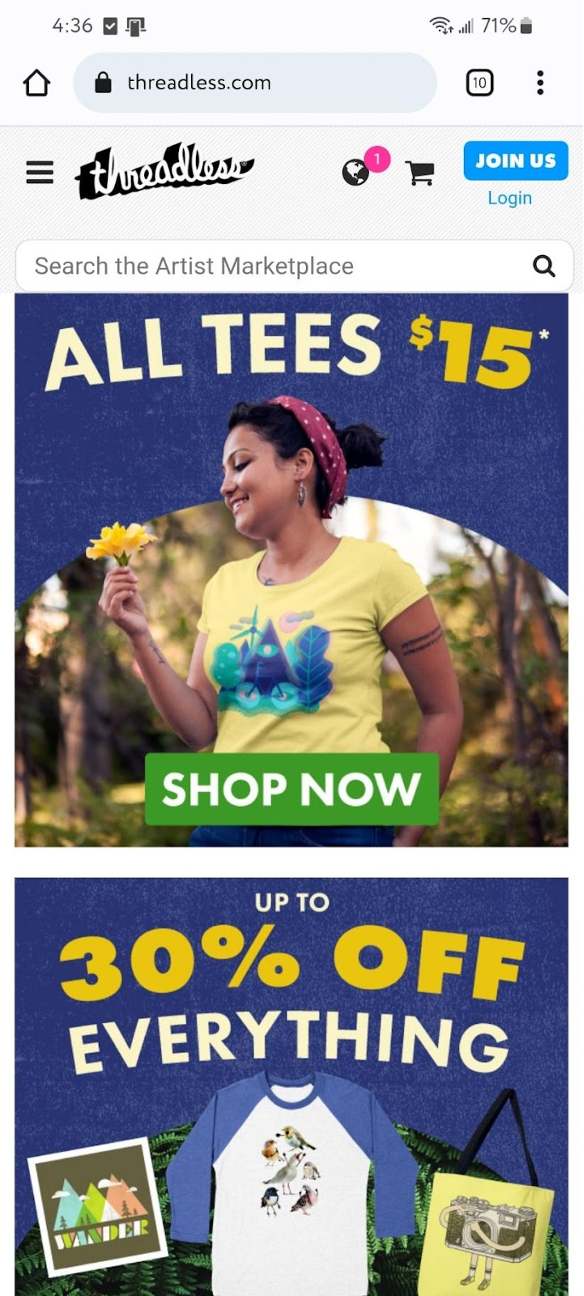
Threadless homepage. Image source: Threadless.com
As with many large online platforms, the key to making it easy for visitors to find your products is how well you organize your products. When you visit the Threadless home page, you'll see a curated set of helpful collections. If you want to dig deeper, you can use the search bar to find creators and use the hamburger menu to access individual departments and their subcategories.
Product pages are attractive and functional. Most products have selectable images that allow visitors to explore them more deeply. You can also read customer feedback on the products you are considering purchasing.
remove: In many ways, Threadless is a textbook example of how e-commerce providers should take advantage of the limited real estate on smartphone screens. Navigating the site is fast, fluid, and intuitive. Each page is attractive and well laid out, making it easy to do what you want.
5. Rush
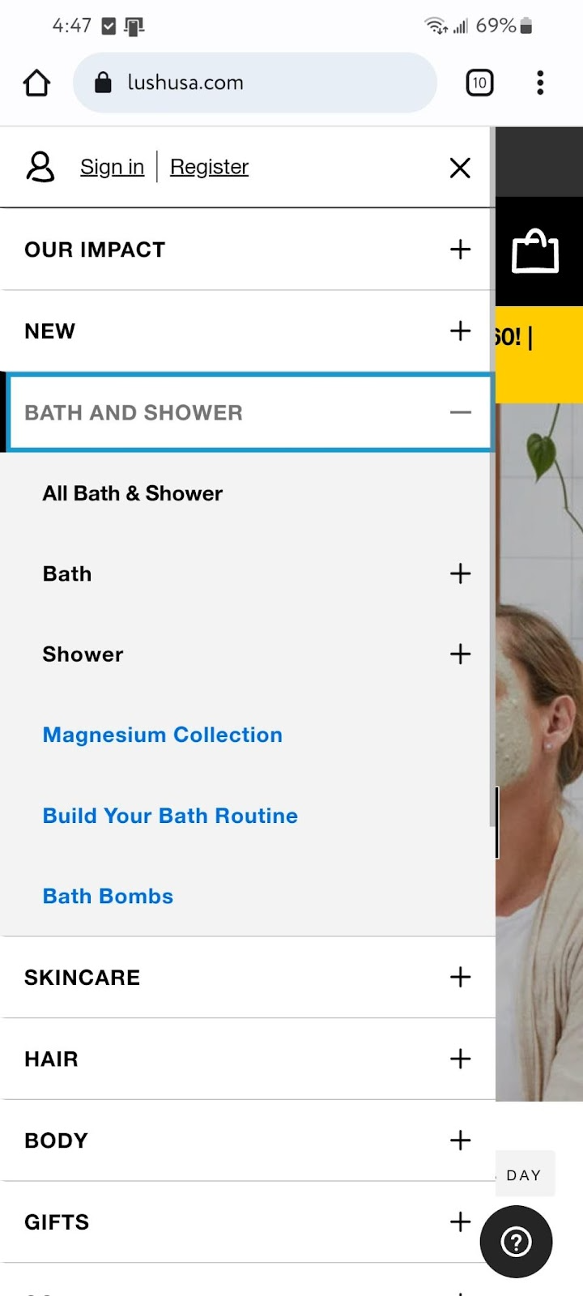
Lush smartphone website navigation. Image source: Lush.com
This handmade soap and cosmetics brand presents its products in a clean, attractive grid format with large product images. A prominent “Add to Cart” button below each product eliminates the need to open a new page for a specific product. With just one click, your desired items will be added to your shopping cart and you can continue browsing from where you left off.
This attractive, minimalist site promotes the brand well and clearly prioritizes user experience. The two-click slide-in menu that appears when you press the hamburger item is nice, and the predictive search bar is especially useful on smaller devices without a real keyboard.
remove: Predictive search is a feature that more e-commerce merchants should integrate into their websites. This speeds up the search process for users and provides a better user experience. From an e-retailer's perspective, like Lush, search offers new opportunities to promote products by including them prominently in search results.
6. My Deal Australia
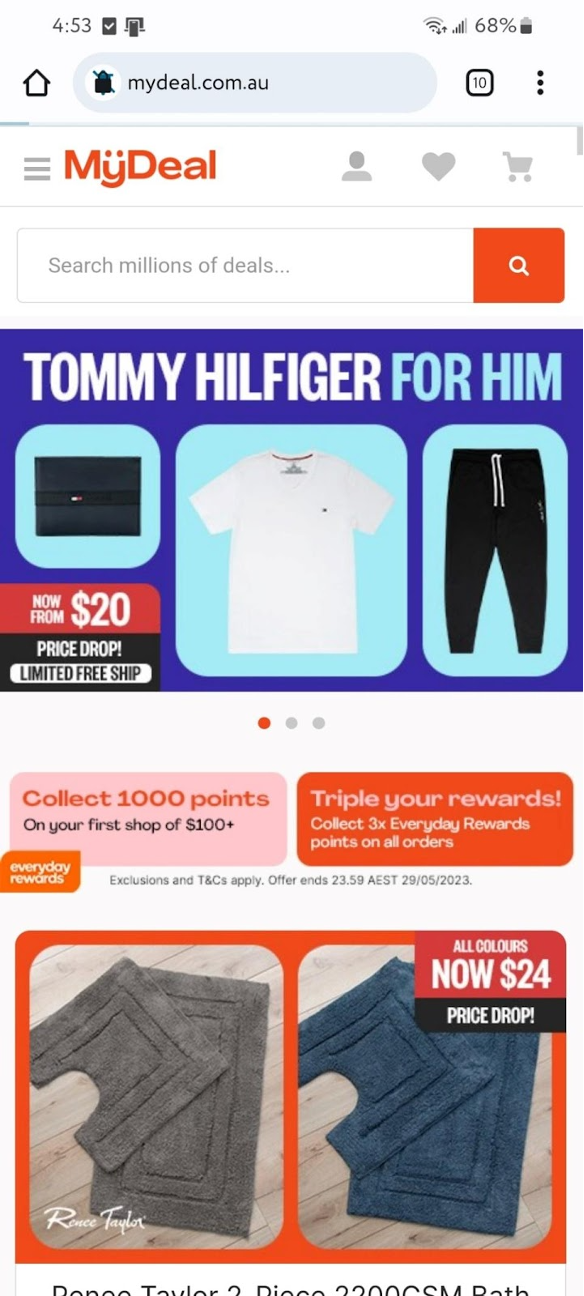
This is MyDeal's smartphone homepage. Image source: MyDeal Australia
The Australia-based global online retailer sells everything from electronics to household goods and is a kind of antipodal Amazon. MyDeal performs the same navigation as Amazon. Touch once to go to a department in MyDeal (such as electronics), touch twice to go to a product group (TVs and projectors), and touch three times to go to a product type (DVD players).
The product images on the website are high quality and the fonts are large enough for easy viewing on all devices. The checkout process is simple and easy on any device, and shipping costs are visible throughout the checkout process, not just on the final page.
remove: The desktop, mobile, and app iterations of MyDeal look great and work great. Great care has been taken to provide the highest level of functionality and ease of use across all three platforms. The app's large font size is helpful for people who are visually impaired or require reading glasses.
7. Amazon
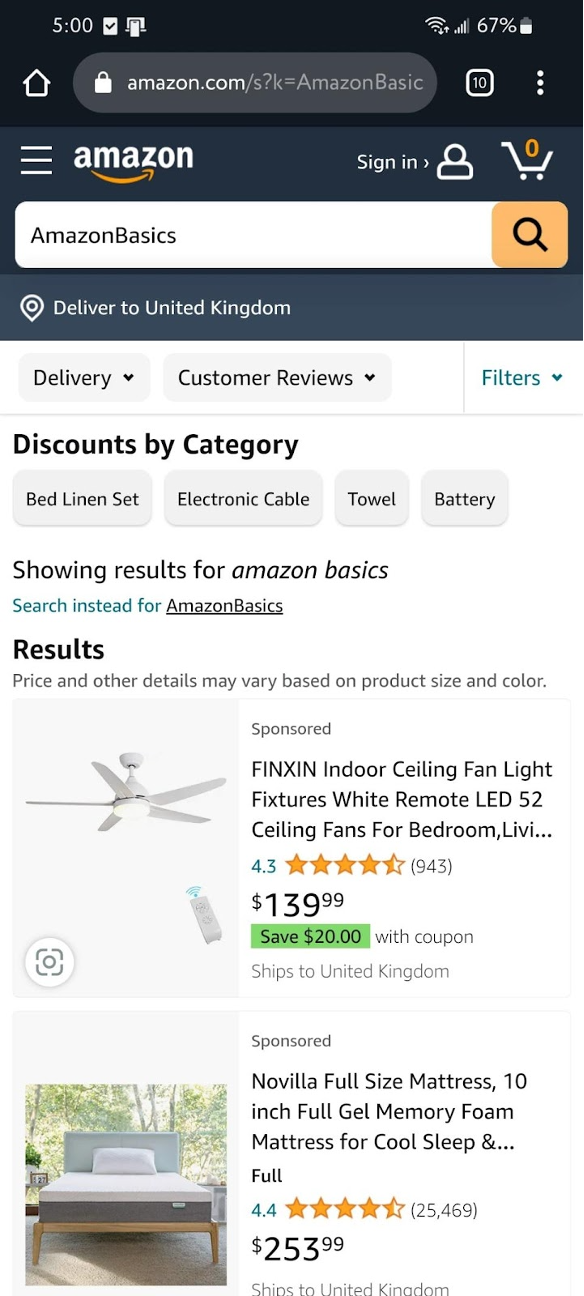
Amazon's homepage for smartphones. Image source: Amazon.com
Amazon's website looks just like the app, so it feels familiar as soon as the page loads. It provides the same functionality as searching by department and with auto-suggestions as you type in the search bar. The site is quick and easy to get where you want to go.
Since its early days, Amazon has been relentlessly focused on giving customers what they want, not winning design awards. Displayed on mobile site.
remove: If you have a large number of products, make it easier for shoppers to navigate your website by allowing shoppers to search by department or category, like Amazon does. Make sure your department link is prominently displayed at the top of the page and easy to find. Keep your link structure consistent throughout your website to avoid confusing shoppers.
The best e-commerce platforms and shopping cart software include mobile optimization, online store integration, and social commerce tools.


